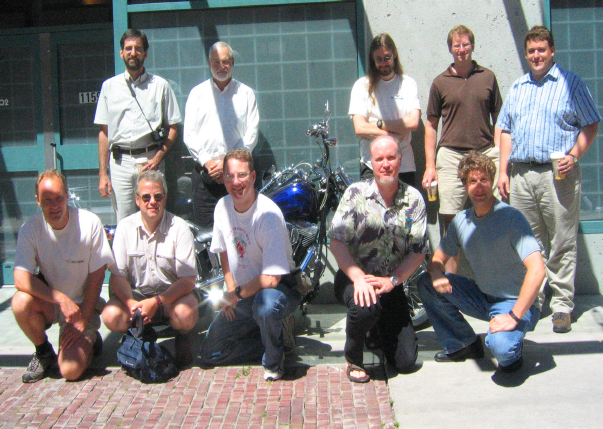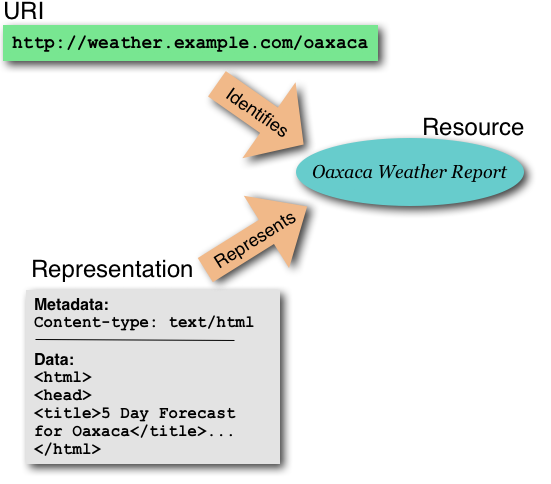Architecture of the World Wide Web
Ian Jacobs, TAG Editor
World Wide Web Consortium
Meeting of xml.gov XML
Working Group
21 January 2004, Washington, D.C.
These
slides online at:
http://www.w3.org/2004/Talks/0121-ij-xmlgov/
(zip file).
Contents
- W3C's Technical Architecture Group (TAG)
- Overview of Architecture of the World Wide Web
- Architecture Review of US Patent Office Web Site
W3C's Technical Architecture Group
W3C's Technical Architecture
Group was chartered in 2001:
"to document and build consensus around principles of Web
architecture and to interpret and clarify these principles when
necessary."
Roles: write, coordinate, mediate
TAG Participants
TAG participants elected and appointed:

Why an Architecture Document?
- To distill ten years of experience with the hypertext Web
- To help developers of Web technologies avoid pitfalls
- To provide guidance to users, site managers, software designers
on promoting a robust Web
- To build consensus around concepts and terms
- To learn humility...
Community Brings Issues to TAG
Teleconference and mailing list discussions ensue.
TAG Explores Problem Space
What makes HTTP GET important?
- HTTP GET designed so that URI alone encodes interaction; allows linking
- Safe/unsafe distinction in protocol enables user agent
support
- Requests with no side-effects enable caching of results:
- At global networking scale, require fast data exchange
- Use caching to improve performance (see HTTP/1.1
study)
- Design protocols that support caching
8 Apr 2002: Dan Connolly receives
assignment to write strawman proposal. This evolves into
a draft finding.
TAG Coordinates to Build Consensus
Groups Document Consensus
Ongoing: Marking safe operations in WSDL
What type of information is in the Architecture Document,
Findings?
- Properties we desire of the Web, and
- Design choices to achieve them.
Example related to previous issue:
- Principles, Constraints, Good Practice Notes
-
- Agents do not incur obligations by retrieving a representation
("GET is safe").
- Rationale
-
- Benefits of URI addressability: linking, bookmarking,
caching
- Benefits of distinction in protocols of safe/unsafe: user
agent alerts, caching
- Stories and examples
-
- Examples of safe (lookup) and unsafe (credit card purchase) interactions
- Considerations for sensitive data
- Practical considerations, ephemeral limitations
Architecture Tripod
- Identification
- Interaction
- Representation
Identification I: Why URIs?
Value of common syntax for global identifiers:
"Great multiplicative power of reuse derives from the fact that all
languages use URIs as identifiers: This allows things written in one
language to refer to things defined in another language. The use of
URIs allows a language to leverage the many forms of persistence,
identity, and various forms of equivalence."
-- URIs, Addressability, and the use of HTTP GET and POST
- Power in the network effect.
- Extension through URI schemes
Identification II: URI Usage
- Comparison. Key to Semantic Web, caches
- Dereference. Discussed below in Interactions
Due to global scope, URIs also used outside of Web protocols (e.g.,
as database keys).
Interaction I: Dereferencing a URI
- Communication between agents involves URIs, messages, data
- Dereference a URI, get back a representation of resource state
- Representation consists of representation data
and metadata (e.g., Internet Media Type).
Interaction II: Dereferencing a URI (illustration)

Interaction III: Managing Representations
- Internet Media Type
- Representations evolve over time as resource, technology
evolves
- Consistency in representation increases trust in URI
- Content negotiation facilitates evolution
- Fragment identifier semantics and content negotiation
Interaction IV: Issues Raised by Interaction
- Safe, unsafe interactions
- Sensitive data
- Access control independent of identification (cf. Deep
Linking Finding)
- Metadata from representation provider authoritative.
Other behavior ok, but requires transparency for user.
Representation: Data formats
- Data formats used to organize representation data
- Data format considerations: binary v. text, extensibility,
versioning, composition, modularization
- Hypertext
- XML-based data formats: links, namespaces, qnames, media types
Architecture Review of US Patent Office Web Site
Review of the United States
Patent and Trademark Office revealed:
- HTTP GET used for database lookup (good)
- HTTP GET used for unsafe interactions (not good)
- URI for patent is actually URI for search (not optimal)
- POST used to protect sensitive login data (design choice)
HTTP GET used for database lookup
HTML "GET" form used for database
lookup:
<form action="/netacgi/nph-Parser" method="GET">
Use GET for queries, searches, database lookups.
HTTP GET used for unsafe interactions (not good)
Modifying state of shopping cart is unsafe since produces
side-effect:
- Search
with keyword "hypertext"
- Select Patent 6,678,889: "Systems, methods and
computer program ...."
- Add to cart, view "Quantity" (1)
- Hit back button, add to cart, view "Quantity" (2)
"Add to Cart" an HTML link:
<a href=".../AddToShoppingCart?docNumber=6,678,889...">...
I cannot link to shopping cart from this slide; a search engine or
pre-fetching agent might increment counter (cf. SVG 1.2, section 11.8.
In HTML, use "POST" form for unsafe operations.
URI for patent is actually URI for search (not optimal)
What might a URI for a patent look like?
http://www.uspto.gov/patents/p6678889
Note that this is globally unambiguous; better than "6678889"
Search produced this URI for search on "hypertext":
http://patft.uspto.gov/...s1=hypertext&OS=hypertext...
Search produced this URI for search by patent number 6,678,899:
http://patft.uspto.gov/...s1=6,678,889.WKU....
Why are these URIs different if this is the same patent?
Cost of Arbitrarily Different URIs
At first, I thought these URIs were arbitrarily different
URIs for the same resource. If so, machines cannot
compare reliably, so:
- Interferes with caching
- Semantic Web does not work
- Site management more complex
Identify Results of Search, not Search
Resource only indirectly identified as query result.
- My expectation is not to bookmark search, but result of search
- Search might return different results another day; I want to
refer to the patent.
Related in Architecture Document:
- Avoid URI ambiguity.
- Publishers of a URI SHOULD provide representations of the
identified resource consistently and predictably.
- URI persistence
POST used to protect sensitive login data (design choice)
- GET allows URIs (bookmarking, back button), but
we don't want sensitive data in URI.
- Choices include:
- GET with HTTP Basic Authentication over SSL: Sensitive
data in HTTP headers, so allows bookmarking. User agent
manages passwords.
- POST over SSL
- However, cost to SSL as well
Think about these architecture issues, tradeoffs during design!
See URIs,
Addressability, and the use of HTTP GET and POST
Future work
Questions
Review period for Architecture of the World Wide Web open until 5 March 2004; see
Call
for Review.
Last modified: $Revision: 1.61 $


